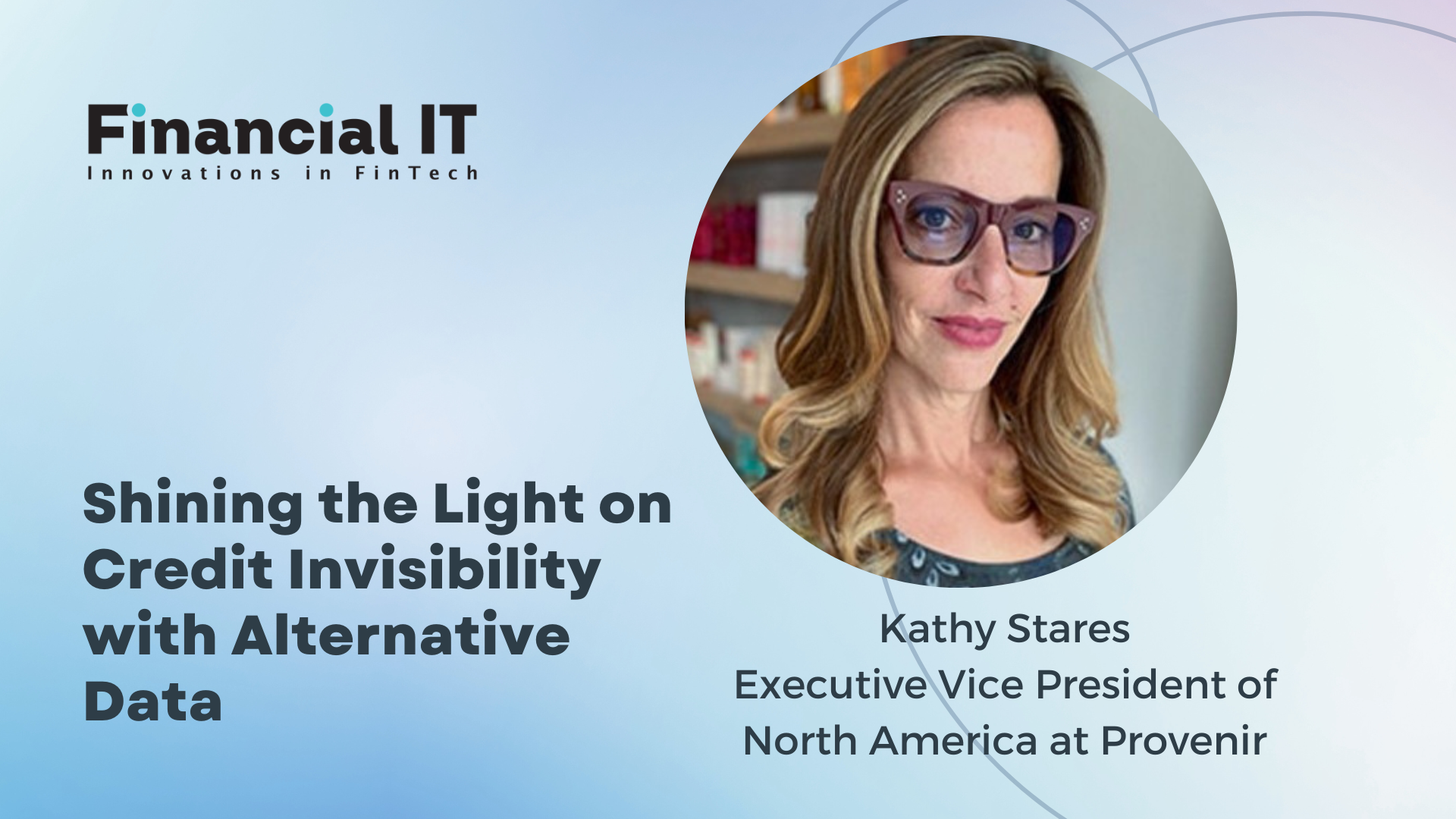Shining the Light on Credit Invisibility with Alternative Data

- Kathy Stares, Executive Vice President of North America at Provenir
- 21.06.2023 11:45 am #data
There are many terms for those who lack a traditional credit history – thin-filed, credit invisible, unbanked, underbanked. It’s estimated that nearly 80 per cent of adults worldwide are either underbanked or unbanked. It’s time for a sea change in the entire financial services industry. Without acknowledging this and taking the requisite action, the industry will remain prejudicial and oppressive by default. But a desire to change must be paired with the capacity to push credit decisioning to the edge.
How can lenders ensure equal access to credit, even for those without formal credit histories, without sacrificing their risk strategy? One way is to use alternative data. Alternative data includes anything outside of a traditional credit report that may indicate creditworthiness, including telco information, rent and utility payment information, social media and web presence, travel data and open banking information.
According to a report by TransUnion, “leveraging alternative data sources that reflect behaviour and activity on non-credit accounts can enhance a lender’s visibility into unserved consumers and provide a basis to assess their creditworthiness.” TransUnion’s analysis in the U.S. found that, with the inclusion of rental payment tradelines in the credit file, approximately nine per cent of those consumers who were previously unscorable under traditional risk scores became scoreable.
Because this type of data is often missing from traditional credit reports (and thus the formulation of credit scores), these reports can be inherently biased towards thin-file or new-to-credit applicants. The data that FICO scores consider (such as payment history, length of credit history, etc.) is also often influenced by generational wealth and the passing of large assets such as homeownership. For example, mortgage data counts towards a credit score; however, rental payments usually do not, even though both are under the same category of “housing payments.” Ensuring that lenders are supplementing traditional credit scores with alternative data helps to overcome this bias and leads to financial inclusion.
Using alternative data also helps to provide a more holistic view of the financial health (both current and future potential) of applicants, improves decisioning accuracy and even helps increase fraud protection with improved identity verification and Know Your Customer (KYC) onboarding processes. Enabling more accurate credit decisioning allows lenders to expand their market safely, without increasing risk, and helps to provide access to all unbanked/thin-filed individuals, setting people on the path to safely building their credit scores and financial futures.
There are more and more innovative ways to determine creditworthiness, including the integration of alternative data, the implementation of advanced decisioning solutions, and using more accurate, predictive models with artificial intelligence. This is resulting in more varied opportunities to access credit and financial services products, including the advancement of buy now, pay later (BNPL) solutions, and neobanks and fintechs, as well as traditional banks and credit unions that are now taking a fresh approach to credit products.
Fintech has revolutionized many segments of the financial ecosystem, and there are innovative upstart lenders specifically focused on underserved markets. However, these are addressing only a fraction of the need. The entire sector needs to embrace new ways to evaluate financial health to make financial inclusion a reality.
























